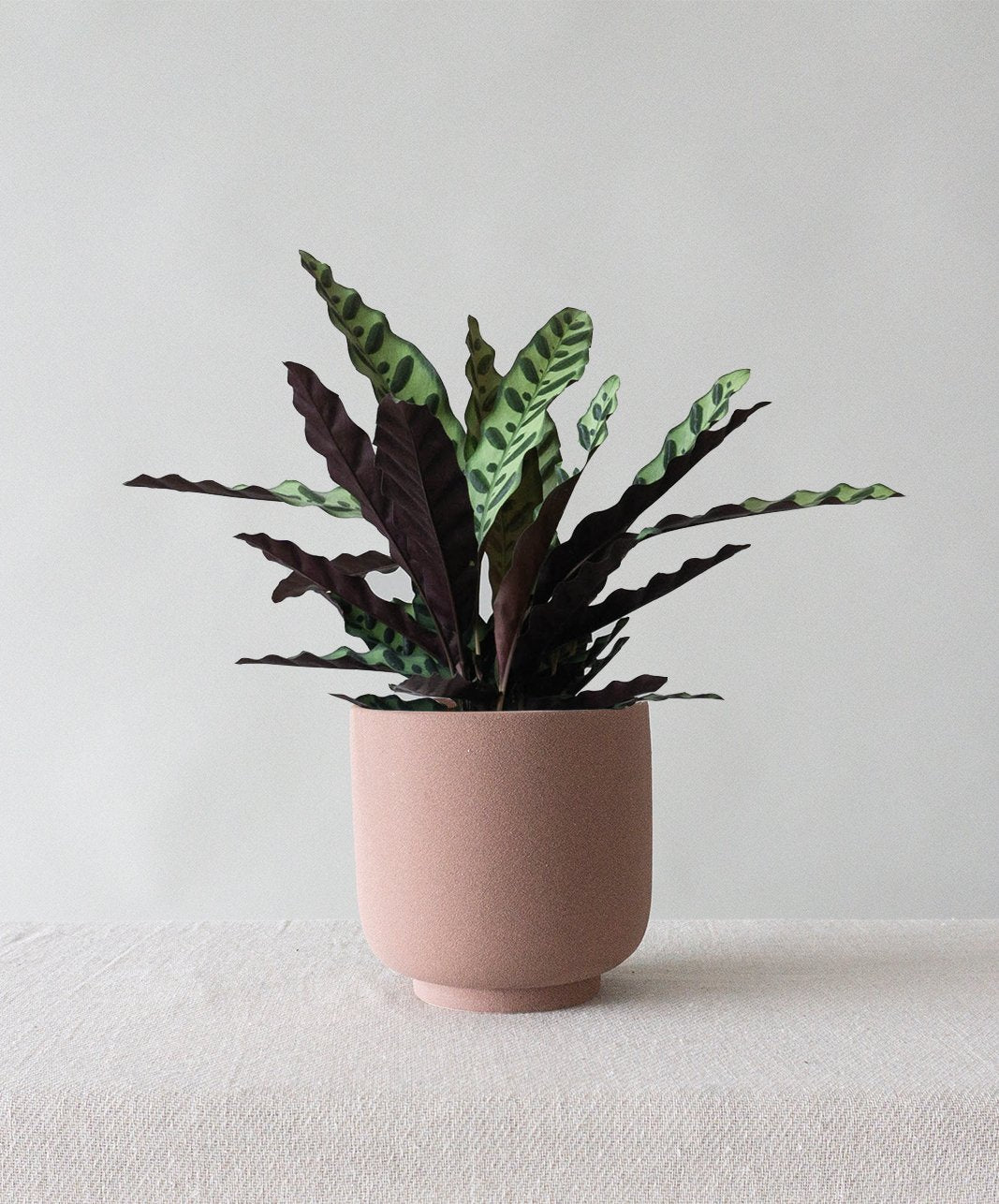
Calathea Rattlesnake
Native to Brazil, the Rattlesnake plant (Goeppertia insignis) is an evergreen houseplant, which is eye-catching and beautiful. Its dark green, burgundy foliage makes it a distinctive feature plant in your home. Check out our top tips for caring for your Rattlesnake Calathea here.
